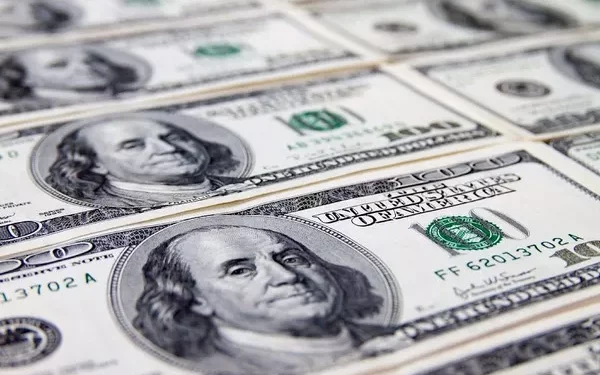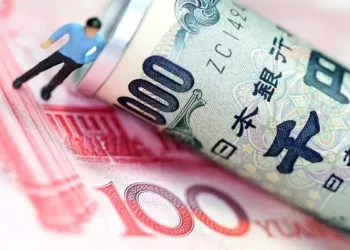In the dynamic world of foreign exchange (forex) trading, currency pegs are crucial mechanisms that many countries use to stabilize their economies and support consistent economic growth. One such example is the United Arab Emirates (UAE), which has maintained a fixed exchange rate regime by pegging its currency, the UAE dirham (AED), to the US dollar (USD). Since 1997, the UAE has maintained this peg at a rate of approximately 3.6725 AED to 1 USD. This article explores the rationale behind this monetary policy decision, its economic implications, and how it affects various stakeholders in the UAE and beyond.
Understanding Currency Pegs
A currency peg is a policy in which a country fixes its domestic currency’s exchange rate to that of another currency, usually one that is considered stable and widely used in international trade, such as the US dollar or the euro. Pegging is done to provide stability to a country’s economy, especially in cases where the local currency might be volatile or where the country is heavily reliant on foreign trade and investment.
Countries that adopt a currency peg often do so to:
- Stabilize exchange rates.
- Control inflation.
- Encourage foreign investment.
- Facilitate trade with key partners.
In the case of the UAE, the decision to peg the AED to the USD aligns with all of these objectives. But to fully understand the UAE’s reasoning, we must consider both historical and economic contexts.
Historical Context of the USD-AED Peg
The UAE was formed in 1971, and since its inception, the country has sought monetary stability as a cornerstone of its economic development. In the 1970s and 1980s, the region experienced economic fluctuations driven by oil price volatility and political instability in neighboring regions. During this period, the US dollar emerged as the dominant global reserve currency, largely due to the size of the US economy, the depth of its financial markets, and its role in global trade, especially the oil market, which is predominantly priced in USD.
Initially, the UAE dirham was linked to the International Monetary Fund’s Special Drawing Rights (SDRs), but the country shifted to a de facto peg to the US dollar in the early 1980s and formalized the peg in 1997. This move provided a predictable exchange rate, which helped in planning and attracting foreign investment.
Oil Exports and the Dollar
A key reason for the USD peg is the UAE’s heavy reliance on oil exports. Oil is globally traded in US dollars, and as one of the world’s leading oil producers, the UAE earns most of its foreign exchange revenues in USD. Pegging the AED to the USD eliminates exchange rate risk in the country’s most critical sector.
If the AED were allowed to float freely, fluctuations in the exchange rate could lead to significant volatility in government revenue and the broader economy. By maintaining a fixed rate with the USD, the UAE can align its currency with its primary source of income, ensuring consistent fiscal planning and budget forecasting.
Monetary Policy and Inflation Control
Pegging to the USD also means that the UAE’s monetary policy must closely follow that of the United States. While this limits the UAE Central Bank’s ability to set interest rates independently, it has the benefit of importing monetary discipline from the US. Since the US Federal Reserve is known for its strong institutional credibility and effective inflation control, aligning with its policies can help the UAE manage domestic inflation.
In a region where inflation can be influenced by volatile commodity prices, real estate cycles, and capital inflows, maintaining a stable currency helps anchor inflation expectations and ensures that the cost of living remains predictable.
Foreign Investment and Economic Confidence
The UAE is a global hub for business, finance, and tourism. Cities like Dubai and Abu Dhabi attract significant foreign investment, not only in oil but also in real estate, logistics, technology, and services. A stable currency is a major draw for international investors, who seek to minimize currency risk when making long-term investments.
By pegging the AED to the USD, the UAE assures investors that the value of their investments will not be eroded by currency depreciation. This stability has been crucial in positioning the UAE as a top destination for foreign direct investment (FDI) in the Middle East.
Trade and Regional Stability
The UAE is also a major trading hub, re-exporting goods across the Middle East, Asia, Africa, and Europe. A fixed exchange rate with the USD simplifies pricing for goods and services, reducing transaction costs and improving transparency in international trade deals. Moreover, since many of the UAE’s trading partners also link their currencies to the USD, this further facilitates regional trade integration.
Tourism and Expatriate Workforce
Tourism is another significant contributor to the UAE economy, and a stable currency enhances its attractiveness to international visitors. It also benefits the large expatriate population, many of whom send remittances back home. A predictable AED/USD rate allows expatriates to plan their finances better and reduces the risk associated with currency conversion.
Challenges of Maintaining the Peg
While the USD-AED peg offers many advantages, it is not without challenges. One major limitation is the loss of autonomous monetary policy. The UAE must align its interest rates with those set by the US Federal Reserve, even if domestic economic conditions would suggest a different course of action.
For example, if the US raises interest rates to combat inflation while the UAE is experiencing low growth, the UAE must still follow suit to maintain the peg. This can result in suboptimal outcomes for the local economy.
Additionally, maintaining a currency peg requires large foreign exchange reserves. The UAE Central Bank must intervene in the forex market to buy or sell USD in order to keep the exchange rate fixed. Fortunately, due to the UAE’s oil wealth, it has accumulated substantial reserves, which have allowed it to defend the peg effectively.
Speculation and External Pressures
Currency pegs can sometimes come under speculative attack, especially during periods of economic stress or declining oil prices. In such cases, traders might bet against the currency, forcing the central bank to expend reserves defending the peg. However, the UAE’s strong fiscal position, credible institutions, and prudent financial management have so far helped it withstand such pressures.
Conclusion
The decision to peg the AED to the USD has been a cornerstone of the UAE’s monetary and economic policy. It has supported economic stability, facilitated trade and investment, and ensured predictable inflation and fiscal management. Despite its constraints, the peg has served the UAE well, helping the country transform into one of the most dynamic and diversified economies in the Middle East.
For forex traders, the USD-AED peg provides a rare example of long-term currency stability in a volatile region. Understanding the rationale and implications of this peg is essential for anyone involved in Middle Eastern markets or trading currencies linked to the USD.
In a world of increasing economic complexity, the enduring nature of the USD-AED peg underscores the importance of monetary stability as a driver of growth, confidence, and international cooperation.
Related Topics:
























